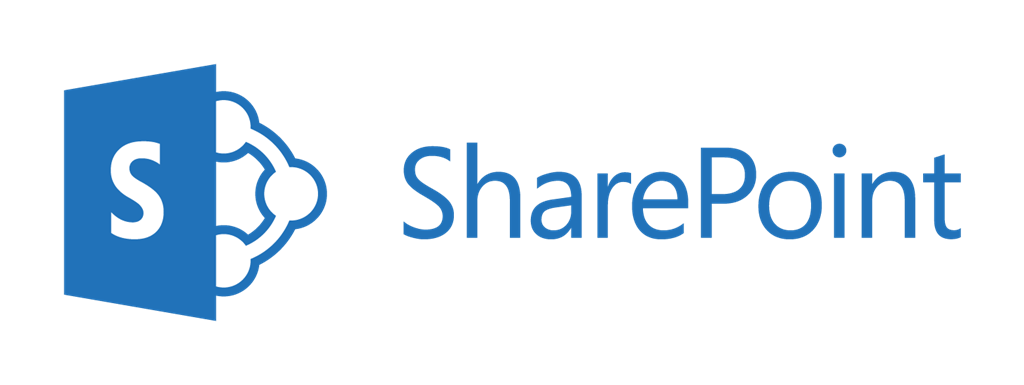Building a SharePoint Farm involves several steps to make sure the site will be utilized by the business users. Governance takes a big part on the design of the Sites(s)
Depending of the size of your farm is conceivable that you will need more than one site colleciton to allocate your business data and to keep security permissions isolated among all the business units. here is where creating programatically all your site collections becomes handy, specially when you don’t have to repeat your self and like to things move agile at all times.
The Following code will be able to create a Database to be used by this site collection, Create a site collection that store the data in the recently created database assign as site collection administratror a specific account, in this case the Farm Admin or the Sharepoint Admin account, with the Template Team Site. Finally run a custom permission level script to be used in this Site Collection and as part of the global compliance security policy of the Farm.
$MyDB = New-SPCOntentdatabase -Name “SC_HR” -WebApplication “http://sharepoint2013.com” -MaxSiteCount 1 -WarningSiteCount 0
$site = New-SPSite -URL “http://sharepoint2013.com/depts/hr” -ContentDatabase $MyDB -OwnerAlias “DOMAIN\sharepointadmin” -OwnerEmail “sharepointadmin@DOMAIN.com” -Name “HR” -Template “STS#0”
.\custom_perm_groups.ps1 -path “/depts” -name “/hr” -sitename “HR”
You can verify from Central Admin, In Application Management, View all Site Collections will reflect the name of the user /hr and the new Database linked to it.
The script can be modified to use a different template… in order to display all the Templates available in your SharePoint Farm use the command “Get-SPWebTemplate”
Feel free to replace the used STS#0 “Team Site” to some other template that fits more your needs.
PS C:\> Get-SpWebTemplate
PS C:\> Get-SpWebTemplate
Name Title
—- —–
GLOBAL#0 Global template
STS#0 Team Site
STS#1 Blank Site
STS#2 Document Workspace
MPS#0 Basic Meeting Workspace
MPS#1 Blank Meeting Workspace
MPS#2 Decision Meeting Workspace
MPS#3 Social Meeting Workspace
MPS#4 Multipage Meeting Workspace
CENTRALADMIN#0 Central Admin Site
WIKI#0 Wiki Site
BLOG#0 Blog
SGS#0 Group Work Site
TENANTADMIN#0 Tenant Admin Site
APP#0 App Template
APPCATALOG#0 App Catalog Site
ACCSRV#0 Access Services Site
ACCSVC#0 Access Services Site Internal
ACCSVC#1 Access Services Site
BDR#0 Document Center
DEV#0 Developer Site
DOCMARKETPLACESITE#0 Academic Library
EDISC#0 eDiscovery Center
EDISC#1 eDiscovery Case
OFFILE#0 (obsolete) Records Center
OFFILE#1 Records Center
OSRV#0 Shared Services Administration Site
PPSMASite#0 PerformancePoint
BICenterSite#0 Business Intelligence Center
SPS#0 SharePoint Portal Server Site
SPSPERS#0 SharePoint Portal Server Personal Space
SPSPERS#2 Storage And Social SharePoint Portal …
SPSPERS#3 Storage Only SharePoint Portal Server…
SPSPERS#4 Social Only SharePoint Portal Server …
SPSPERS#5 Empty SharePoint Portal Server Person…
SPSMSITE#0 Personalization Site
SPSTOC#0 Contents area Template
SPSTOPIC#0 Topic area template
SPSNEWS#0 News Site
CMSPUBLISHING#0 Publishing Site
BLANKINTERNET#0 Publishing Site
BLANKINTERNET#1 Press Releases Site
BLANKINTERNET#2 Publishing Site with Workflow
SPSNHOME#0 News Site
SPSSITES#0 Site Directory
SPSCOMMU#0 Community area template
SPSREPORTCENTER#0 Report Center
SPSPORTAL#0 Collaboration Portal
SRCHCEN#0 Enterprise Search Center
PROFILES#0 Profiles
BLANKINTERNETCONT… Publishing Portal
SPSMSITEHOST#0 My Site Host
ENTERWIKI#0 Enterprise Wiki
PROJECTSITE#0 Project Site
PRODUCTCATALOG#0 Product Catalog
COMMUNITY#0 Community Site
COMMUNITYPORTAL#0 Community Portal
SRCHCENTERLITE#0 Basic Search Center
SRCHCENTERLITE#1 Basic Search Center
visprus#0 Visio Process Repository
GLOBAL#0 Global template
STS#0 Team Site
STS#1 Blank Site
STS#2 Document Workspace
MPS#0 Basic Meeting Workspace
MPS#1 Blank Meeting Workspace
MPS#2 Decision Meeting Workspace
MPS#3 Social Meeting Workspace
MPS#4 Multipage Meeting Workspace
CENTRALADMIN#0 Central Admin Site
WIKI#0 Wiki Site
BLOG#0 Blog
SGS#0 Group Work Site
TENANTADMIN#0 Tenant Admin Site
ACCSRV#0 Access Services Site
ACCSRV#1 Assets Web Database
ACCSRV#3 Charitable Contributions Web Database
ACCSRV#4 Contacts Web Database
ACCSRV#6 Issues Web Database
ACCSRV#5 Projects Web Database
BDR#0 Document Center
OFFILE#0 (obsolete) Records Center
OFFILE#1 Records Center
OSRV#0 Shared Services Administration Site
PPSMASite#0 PerformancePoint
BICenterSite#0 Business Intelligence Center
SPS#0 SharePoint Portal Server Site
SPSPERS#0 SharePoint Portal Server Personal Space
SPSMSITE#0 Personalization Site
SPSTOC#0 Contents area Template
SPSTOPIC#0 Topic area template
SPSNEWS#0 News Site
CMSPUBLISHING#0 Publishing Site
BLANKINTERNET#0 Publishing Site
BLANKINTERNET#1 Press Releases Site
BLANKINTERNET#2 Publishing Site with Workflow
SPSNHOME#0 News Site
SPSSITES#0 Site Directory
SPSCOMMU#0 Community area template
SPSREPORTCENTER#0 Report Center
SPSPORTAL#0 Collaboration Portal
SRCHCEN#0 Enterprise Search Center
PROFILES#0 Profiles
BLANKINTERNETCONT… Publishing Portal
SPSMSITEHOST#0 My Site Host
ENTERWIKI#0 Enterprise Wiki
SRCHCENTERLITE#0 Basic Search Center
SRCHCENTERLITE#1 Basic Search Center
SRCHCENTERFAST#0 FAST Search Center
visprus#0 Visio Process Repository
The content of the custom_perm_groups is:
# URL Configuration to create
param (
)
# .\my_create_custom_groups.ps1 -path ‘/templates’ -name ‘/my_hr’ -sitename ‘My hr’
$siteURL=[string]$siteURL;
$path=[string]$path;
$subsite=[string]$name;
$sitename=[string]$sitename;
# Lets Load the URL in powershell…
$relpath=$path+$subsite
$siteURL=$siteURL+$relpath
Write-Host -ForegroundColor yellow “siteURL [ $siteURL ]”;
$site=Get-SPSite $siteURL
$web=$site.RootWeb
# Lets Start with Viewers…
$groupName= “$sitename Viewers”
$permissionLevel= “My Viewers”
$description= “$sitename Viewer Group”
Write-Host -ForegroundColor yellow “Creating Group [ $groupName ] with permission level [ $permissionLevel ]”;
$newGroup=$web.SiteGroups.Add($groupName,$web.CurrentUser,$null,$description)
$group=$web.SiteGroups[$groupName]
$roleAssignment= New-Object Microsoft.SharePoint.SPRoleAssignment($group)
$roleDefinition= $web.RoleDefinitions[“$permissionLevel”]
$roleAssignment.RoleDefinitionBindings.Add($roleDefinition)
$web.RoleAssignments.Add($roleAssignment);
$web.Update()
# Lets add Authenticated Users to the Site.
$user = $web.EnsureUser(‘NT AUTHORITY\AUTHENTICATED USERS’)
$group.Adduser($user)
# Lets Work with Members…
$groupName= “$sitename Members”
$permissionLevel= “My Members”
$description= “$sitename Member Group”
Write-Host -ForegroundColor yellow “Creating Group [ $groupName ] with permission level [ $permissionLevel ]”;
$newGroup=$web.SiteGroups.Add($groupName,$web.CurrentUser,$null,$description)
$group=$web.SiteGroups[$groupName]
$roleAssignment= New-Object Microsoft.SharePoint.SPRoleAssignment($group)
$roleDefinition= $web.RoleDefinitions[“$permissionLevel”]
$roleAssignment.RoleDefinitionBindings.Add($roleDefinition)
$web.RoleAssignments.Add($roleAssignment);
$web.Update()
# Lets Finish with Owners…
$groupName= “$sitename Owners”
$permissionLevel= “My Owners”
$description= “$sitename Owner Group”
Write-Host -ForegroundColor yellow “Creating Group [ $groupName ] with permission level [ $permissionLevel ]”;
$newGroup=$web.SiteGroups.Add($groupName,$web.CurrentUser,$null,$description)
$group=$web.SiteGroups[$groupName]
$roleAssignment= New-Object Microsoft.SharePoint.SPRoleAssignment($group)
$roleDefinition= $web.RoleDefinitions[“$permissionLevel”]
$roleAssignment.RoleDefinitionBindings.Add($roleDefinition)
$web.RoleAssignments.Add($roleAssignment);
$web.Update()
$web.Dispose()
$site.Dispose()
The Site uses the existing Custom Permissions Levels to create 3 Customized named security groups using those permission levels and assign the role to it. also add the authenticated users to the domain with the default My Viewer permission.
Now we are ready to start using our HR Site Collection with the assurance of 1 Database for the content of this site, with the correct template to be used and with the correct permission levels.
The only thing left to do is to verify the default created permission levels and leave the custom take lead on the permissions not only for this site, but also to all the subsites created underneath their url.
Clicking on Site Settings, Site Permission. The Custom Created Security Groups using also the Custom Created Permission Levels should be.










Leave A Comment